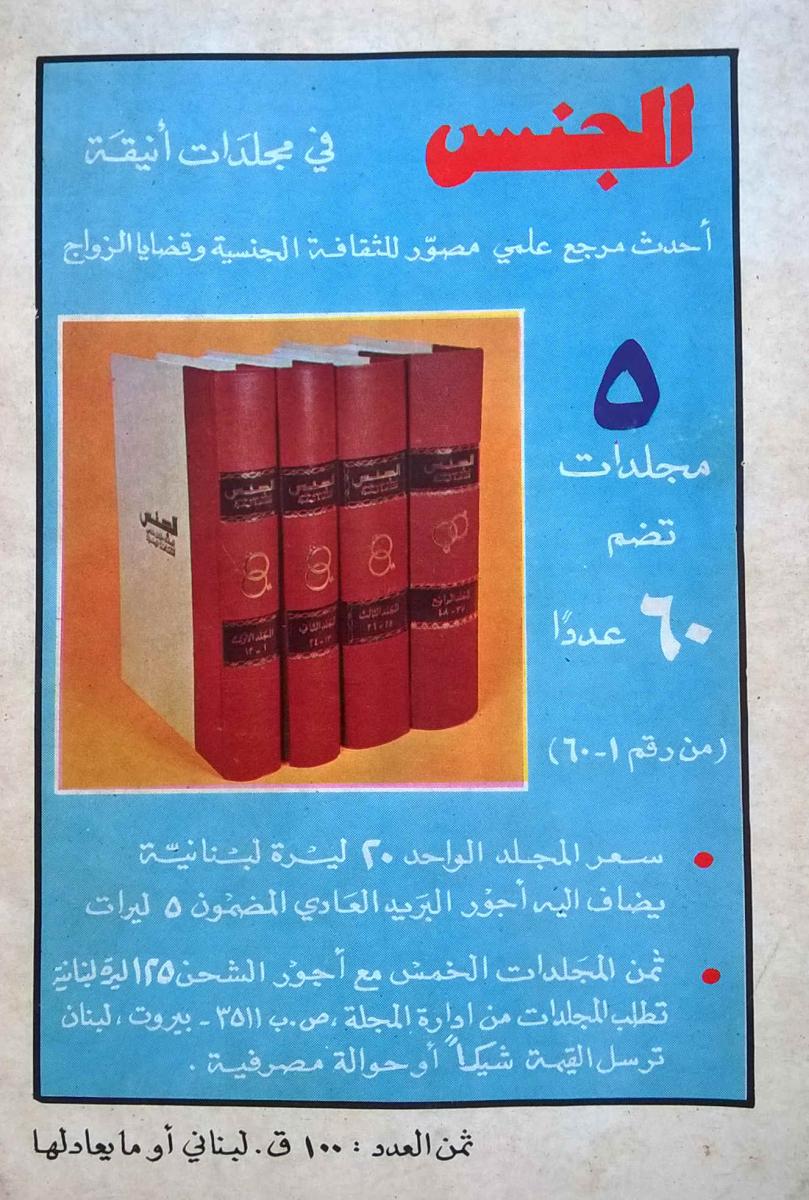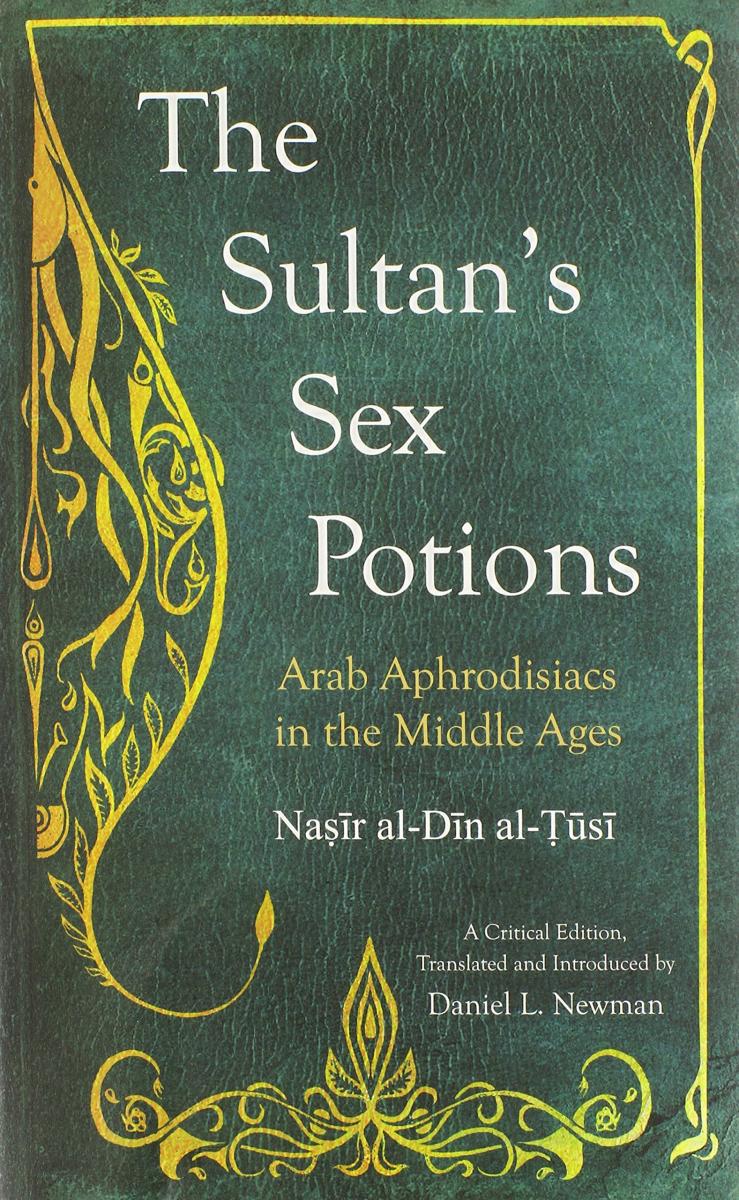
On a recent trip to Beirut I came across a stack of magazines that – judging by their cover photos – looked suspiciously like Arabic porn. Unambiguously titled "al-Jins" (Arabic for "sex") they were displayed on a newspaper stall in Hamra Street, for sale secondhand.
Their less-than-pristine condition was explained by the fact they had all been printed in the 1960s or 1970s and, perhaps surprisingly, published under a permit from Lebanon's government.
The oldest ones on sale had originally been priced at "100 qirsh or what it's worth" but, with inflation over the years, the stallholder was now asking 4,000 Lebanese pounds ($2.60). When I offered to buy two, though, he settled for 3,000 each.
Surviving copies of al-Jins provide some insight into Lebanese attitudes to sex 40-50 years ago and a point of comparison for attitudes today. Its target readers were undoubtedly men. Out of 16 different issues that I looked at, all but two of the covers showed women displaying their breasts in various seductive poses. The only exceptions were one showing a naked man (with his genitals discreetly concealed in shadow) and another of a male and female couple apparently sharing an intense moment together. Readers who would like to see some examples can click here.
Beyond these titillating covers, though, al-Jins claimed to have a "scientific" and educational purpose. It described itself as "a modern guide to sex and and marriage" and a note on the index page said it was supervised by "a panel of doctors, psychiatrists and specialists". It also had pretensions of permanent value: readers were encouraged to preserve old copies for future reference by purchasing gold-lettered binders which, if kept unopened, would not disgrace any bookshelf.

Al-Jins was clearly treading a fine line between education and masturbation. On one hand it cultivated a veneer of respectability (perhaps to safeguard its publishing licence) and on the other hand provided its male customers with some fleeting sexual excitement. Even so, the claim that it served a useful and necessary purpose is not easily dismissed as pretence, since most of its readers would have had no sex education in school.
Its articles covered both the physical and emotional aspects of sex. "Are you fit for marriage?" one asked. Others discussed "Sex from the point of view of the wife", "Age difference between lovers and couples" and "The effects of hormones in sex among women".
Judging by the article titles, fantasies about insatiable women and male anxieties about under-performance seem to have been recurring themes:
- The psychological causes of sexual failure
- Problem of the month: a woman crazy with lust
- Treating sexual impotence with surgery
- The danger of marrying sex-mad women
- Men who rely on sexual laziness
- The narcissistic woman
- Obscene media affect women too
A few articles also explored more sensitive topics such as homosexuality and cross-dressing:
- Sexual relations between boys
- The transvestite: when a man wears a woman's clothes
- Sodomy between males
- Lesbian confessions: how do they arouse your woman?
Occasional diagrams of the female anatomy (with all the parts labelled) were accompanied by a sprinkling of jokes – some very crude. One cartoon shows a man lying in bed as a topless woman enters the room carrying a cup on a tray. Her enormous breasts are resting on the tray and she asks him: "Do you want the coffee black or with milk?!"
In 1973, apparently prompted by the American moon landings, al-Jins tackled the question of how to have sex in space. This seems to have been of such interest to the Lebanese that the magazine returned to it in another issue a couple of years later. The illustration showed a man and a mini-skirted woman attempting to kiss while wearing space helmets.
The first issue of al-Jins appeared in April 1968 and it continued to be published monthly for at least nine years, probably closing as a result of the civil war. Possibly it was influenced by developments in the west, where the 1960s were seen as a time of sexual liberation. Prudish attitudes were being cast aside, sex outside marriage became less secretive and shameful – largely because of the contraceptive pill – and some of that probably touched Lebanon too.
But al-Jins might also be viewed as continuing a centuries-old Arab tradition which didn't shy away from writing and talking openly about sex. Although eclipsed more recently by the spread of religiosity, erotic literature in Arabic has a long and rich history. Writing sex manuals was once considered a scholarly activity and The Perfumed Garden by Muhammad al-Nafzawi is the most famous example. Sir Richard Burton, the 19th-century explorer and orientalist who produced the first English translation (with his own embellishments) commented on "the seriousness with which the most lascivious and obscene matters are presented".
Another example of this genre was The Sultan's Sex Potions by Nasir al-Din al-Tusi (1201–1274) – one of the leading scientists of his day:
"Sober and measured in tone, the treatise was intended as a manual and guide, to be used by those afflicted with various sexual ailments, especially impotence, for self-healing, without resorting to a physician. It was composed at the request of the ruler and so its potions, electuaries, syrups and enemas enjoyed a 'royal warrant of appointment' to arouse the lust for coitus and enhance sexual potency."

Showing copies of al-Jins to a few friends in Beirut, I asked if they thought anything similar could be published today – and they all said no. They doubted that it would be considered acceptable in the current the social climate, even in a relatively laid-back Arab country like Lebanon, not only because of prudery but also because of the way it objectified women. They doubted, too, that many men would bother to buy it; those looking for sexual arousal can find much more exciting stuff these days on the internet (a subject explored by Egyptian writer Youssef Rakha in his recent e-book, Arab Porn).
By default, porn has become an integral part of what, for most Arabs, is a very haphazard sex education. Parents and doctors are reluctant to talk about sex and school classes on the subject can be minimal or non-existent. One 29-year-old Lebanese man from a Shia district of Beirut told the French tv5monde: "I mostly learned by talking about sex with my friends, older than me, and by watching hot programmes on television, at night, porn."
Aside from porn the internet can, of course, be a source of factual information about sex but such information in Arabic is still in short supply. The "Love Matters" project – an offshoot of Radio Netherlands – has a website in Arabic which aims to talk about sex "with frankness and without restriction" to Arabs in the 18-30 age group and provides information about sexual health and birth control along with discussion of relationship issues. According to coordinator Abir Serras, though, it's the only Arabic-language website of its kind. Without more readily-accessible information of this kind, it often falls to a few organisations like Marsa, a sexual health centre in Beirut, to pick up the pieces.
In the 1960s and 1970s part of the rationale for publishing al-Jins was to make up for a lack of sex education in Lebanese schools. That is still a problem today, though it depends on the type of school. In general, secular private schools do more and religious schools less – often a lot less. Efforts to increase the fairly minimal amount of compulsory sex education in the national curriculum and bring it up to date have generated plenty of discussion in recent years (here, here and here) but have continued to be been held back by religious objections and fears that it would encourage sinful behaviour.

 RSS Feed
RSS Feed
